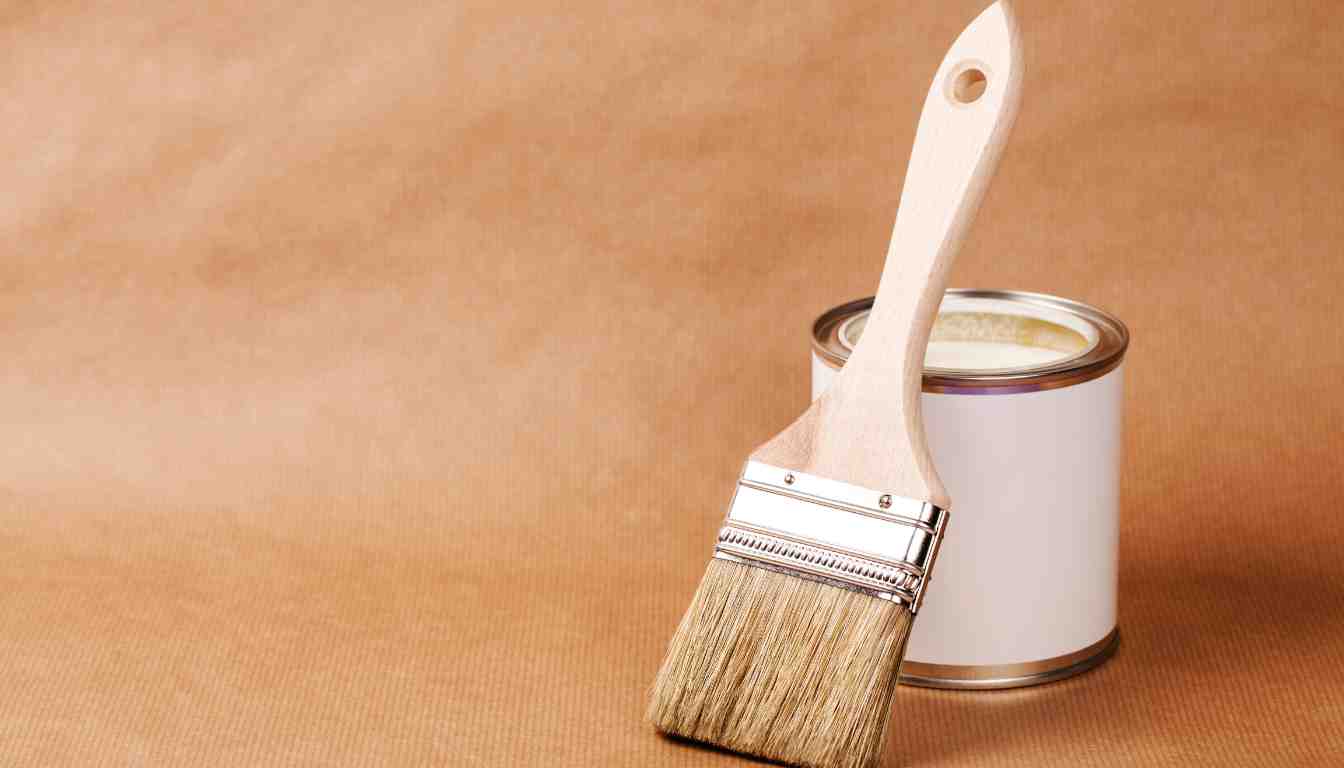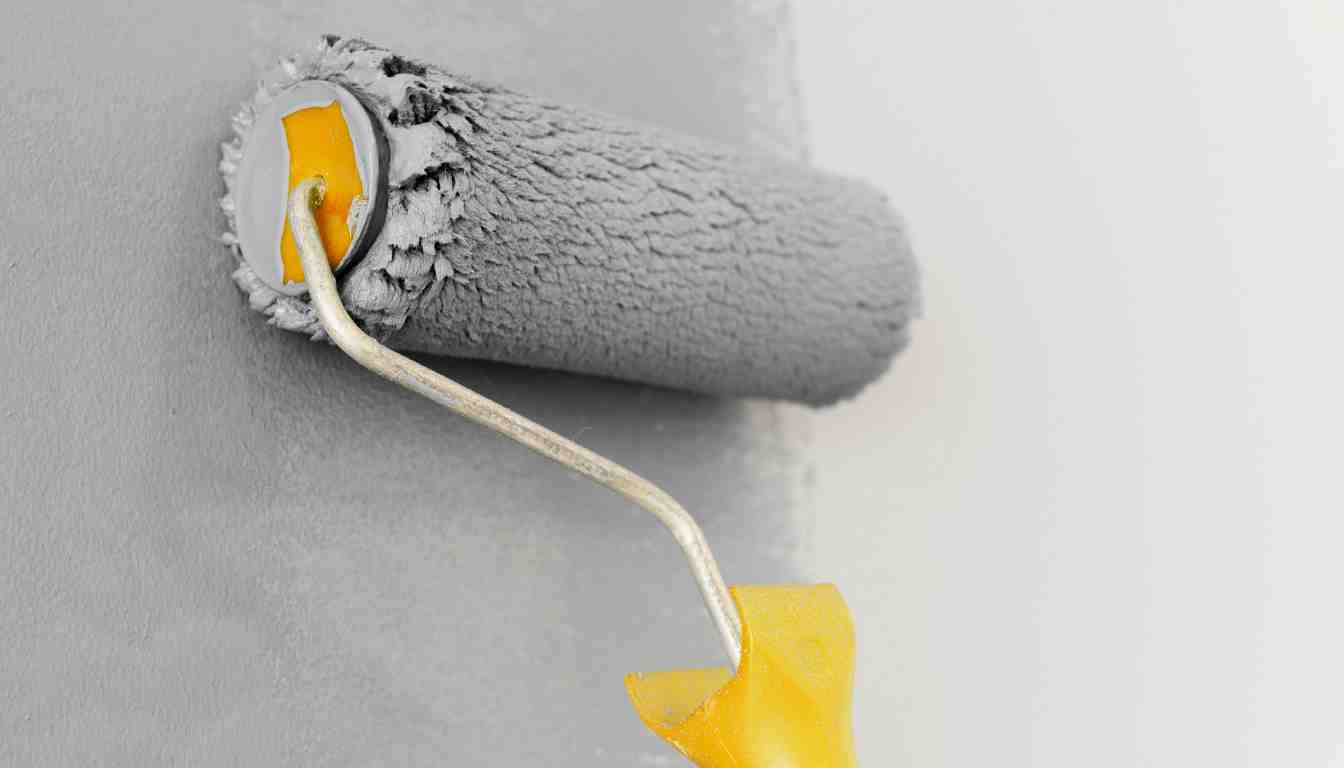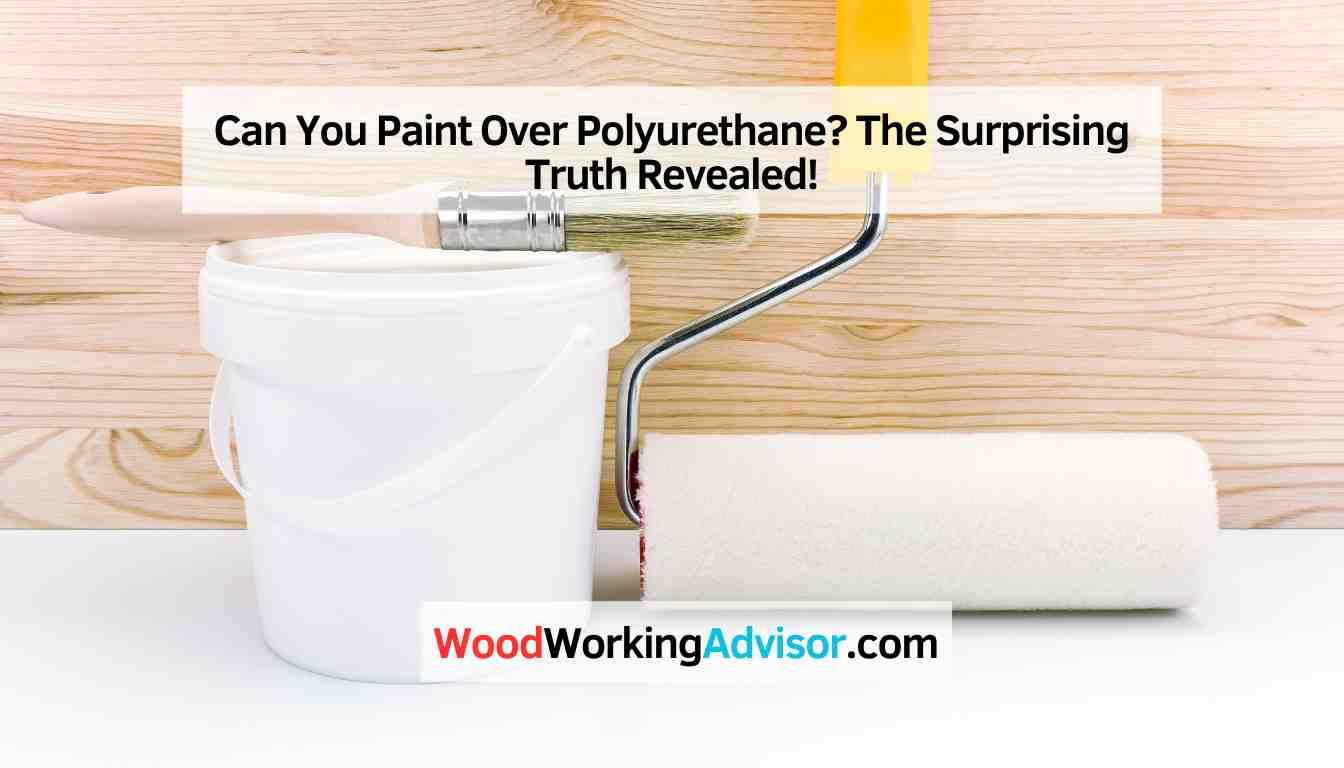Yes, you can paint over polyurethane.
What Is Polyurethane?
Polyurethane is a versatile synthetic material widely used in various industries due to its exceptional characteristics. It is a type of synthetic resin that forms through the reaction of polyols and diisocyanates. The resulting material is highly durable, heat-resistant, and flexible, making it suitable for a wide range of applications.
Composition Of Polyurethane
Polyurethane consists of two main components: polyol and diisocyanate. Polyols are alcohol-based compounds that provide flexibility, toughness, and rigidity to the final product. Diisocyanates, on the other hand, play a crucial role in bonding the polyols together and adding stability to the material. The ratio of these components affects the final properties of the polyurethane, allowing manufacturers to tailor it according to their specific requirements.
Common Uses Of Polyurethane
Polyurethane is widely used in various industries and applications due to its exceptional properties. Some common uses of polyurethane include:
- Furniture: Polyurethane coatings provide a protective layer for wooden furniture, enhancing its durability and appearance.
- Automotive: Polyurethane is used in car interiors, seats, and bumpers due to its resistance to wear and tear.
- Construction: It is commonly used for insulation, sealants, adhesives, and coatings in buildings and infrastructures.
- Footwear: Polyurethane is commonly used in shoe soles due to its cushioning and shock absorption capabilities.
- Appliances: Polyurethane foam is used for insulation in refrigerators and various household appliances.
- Marine and Aerospace: Polyurethane coatings are used to protect surfaces from corrosion and provide resistance to harsh environments.
These are just a few examples of the widespread applications of polyurethane. Its versatility, durability, and performance make it an essential material in many industries.

Understanding The Challenges
Polyurethane is a protective coating commonly used on furniture, floors, doors, and other wooden surfaces to provide durability and a glossy finish. However, if you’ve decided to give your polyurethane-coated surfaces a fresh new look, you might be wondering if you can simply paint over the existing coat. While it is possible to paint over polyurethane, it comes with its own set of challenges that you need to be aware of. Let’s delve into these challenges and understand why painting over polyurethane can be difficult.
Why Painting Over Polyurethane Can Be Difficult
Painting over polyurethane can be a tricky task due to various reasons. It’s important to understand these challenges before attempting to paint over a polyurethane-coated surface.
Adhesion Problems:
One of the main challenges when painting over polyurethane is achieving proper adhesion. Polyurethane is known for its smooth, non-porous surface, which can make it difficult for paint to adhere to it effectively. Without proper adhesion, the paint may start peeling or chipping, leading to unsightly results and the need for touch-ups. You may need to consider using specific primers or sanding the polyurethane surface to ensure better adhesion for the paint.
Finish Peeling or Chipping:
Another challenge of painting over polyurethane is the risk of the existing finish peeling or chipping. If the polyurethane coating is already damaged or showing signs of wear, the paint may not adhere properly to the surface, resulting in a poorly finished look. In such cases, it’s essential to thoroughly inspect the polyurethane coating for any cracks, flaking, or loose areas before attempting to paint over it. Addressing these issues beforehand by repairing or removing the damaged polyurethane can help ensure a smoother painting process.
Preparation Steps For Painting Over Polyurethane
When it comes to giving your furniture or cabinets a fresh new look, painting over polyurethane can be a great option. However, before diving into the painting process, it is crucial to follow the right preparation steps. By taking the time to clean the surface, sand the polyurethane, and apply a primer, you can ensure that the paint adheres properly and achieves a smooth finish. In this section, we will guide you through each of these essential preparation steps, providing you with a seamless painting experience.
Cleaning The Surface
Before you can start painting over polyurethane, it is vital to thoroughly clean the surface. This step ensures that any dirt, grease, or other contaminants are removed, allowing the paint to adhere correctly. Here’s how you can clean the surface:
- Begin by preparing a solution of warm water and mild dish soap.
- Dip a clean cloth or sponge into the soapy water and gently scrub the polyurethane surface.
- Rinse the surface with clean water to remove any soap residue.
- Use a dry cloth to thoroughly dry the surface before moving on to the next step.
Sanding The Polyurethane
Sanding the polyurethane is an essential step in the preparation process as it helps to create a rough surface for the paint to adhere to. The sanding process also removes any glossiness or shine from the polyurethane, allowing the paint to bond effectively. Here are the steps to follow when sanding the polyurethane:
- Start by using a medium-grit sandpaper (around 120-150 grit) to sand the entire polyurethane surface in a circular motion.
- Ensure that you sand evenly, covering all areas of the polyurethane to achieve a consistent surface texture.
- Once you have sanded the entire surface with the medium-grit sandpaper, switch to a finer grit sandpaper (around 220 grit) and repeat the sanding process. This step helps to create a smoother surface in preparation for painting.
- After sanding, use a clean, damp cloth to wipe away any dust or debris from the surface. Ensure that the surface is completely dry before proceeding.
Applying A Primer
Applying a primer is a crucial step before painting over polyurethane, as it helps to create an optimal surface for the paint to adhere to. The primer also enhances the durability and longevity of the paint job. Here’s how you can apply a primer:
- Select a high-quality primer suitable for your chosen paint type (oil-based or water-based) and the material of the polyurethane surface.
- Using a brush or roller, apply an even coat of primer to the entire polyurethane surface.
- Allow the primer to dry according to the manufacturer’s instructions. This is usually around 24 hours, but always refer to the specific product guidelines for accurate drying times.
- After the primer has dried, lightly sand the surface with a fine-grit sandpaper to create a smooth finish.
- Remove any sanding residue with a clean, damp cloth.
By following these preparation steps of cleaning the surface, sanding the polyurethane, and applying a primer, you can ensure that your paint will adhere seamlessly and create a beautiful, long-lasting finish. Now that you have completed the necessary preparation steps, you are ready to move on to the exciting part: painting over the polyurethane!
Best Practices For Painting Over Polyurethane
Painting over polyurethane can be a challenging task, but with the right approach, it is definitely achievable. Whether you want to update the look of your furniture or give a fresh coat to your hardwood floors, following these best practices will ensure a successful outcome. In this article, we will discuss the key factors to consider when painting over polyurethane, including choosing the right paint, applying thin layers, and allowing sufficient drying time.
Choose The Right Paint
When it comes to painting over polyurethane, selecting the right paint is crucial for a long-lasting finish. Not all paints adhere well to polyurethane surfaces, so it’s important to choose ones that are specifically designed for this purpose. Look for paints labeled as “bonding primers” or “adhesion primers.” These types of paints are formulated to stick to glossy surfaces like polyurethane, ensuring good adhesion.
Additionally, you may want to consider using oil-based paints instead of water-based ones. Oil-based paints generally provide better coverage and durability on polyurethane surfaces. However, keep in mind that oil-based paints emit stronger fumes and require longer drying times.
Apply Thin Layers
When painting over polyurethane, applying thin layers is key to achieving a smooth and even finish. Thick coats of paint can result in drips, uneven texture, and longer drying times. To ensure thin and even application, consider using a high-quality brush or a foam roller. These tools help in spreading the paint evenly and minimize the risk of streaks or bubbles.
Avoid applying too much pressure when applying the paint. Gentle and consistent strokes will help the paint adhere properly without causing any damage to the polyurethane surface. Remember, it’s better to apply multiple thin coats than to try and cover the surface with a single heavy coat.
Allow Sufficient Drying Time
Properly allowing each layer of paint to dry is crucial when painting over polyurethane. Rushing the process can lead to tackiness, bubbling, or peeling of the new paint. The drying time may vary depending on the type of paint you are using, so always refer to the manufacturer’s instructions.
Ensure that the room is well-ventilated during the drying process to aid in drying the paint faster. Keep in mind that humidity and temperature can affect drying time, so it’s important to choose a suitable environment for the task.
By following these best practices when painting over polyurethane, you can achieve a beautiful and durable finish that will transform the look of your furniture or other polyurethane-coated surfaces. Remember to choose the right paint, apply thin layers, and allow sufficient drying time for a successful outcome.

Alternatives To Painting Over Polyurethane
If you’re looking to change the look of furniture or other surfaces coated with polyurethane, there are several alternatives to painting over it. In this article, we will explore two popular options: stripping the polyurethane and using a polyurethane-compatible paint.
Stripping The Polyurethane
If you want to completely remove the polyurethane before applying a new finish, stripping is a viable option. Here’s how you can do it:
- Gather the necessary materials: You will need a chemical stripper designed for removing polyurethane, disposable gloves, protective eyewear, and a scraping tool.
- Prepare the area: Start by working in a well-ventilated space and protecting the surrounding surfaces with plastic sheets or drop cloths.
- Apply the stripper: Follow the instructions provided with the chemical stripper and apply it evenly over the polyurethane surface. Allow it to sit for the recommended time.
- Remove the polyurethane: Use a scraping tool to gently lift and remove the softened polyurethane. Take care not to damage the underlying surface.
- Clean and sand: After removing the majority of the polyurethane, clean the surface thoroughly and sand it to ensure smoothness.
- Apply a new finish: Finally, you can apply a new finish such as paint or stain to achieve the desired look.
Using A Polyurethane-compatible Paint
If you want to avoid the labor-intensive process of stripping the polyurethane, you can opt for a polyurethane-compatible paint. This type of paint is specifically formulated to adhere to polyurethane surfaces without the need for stripping. Here’s what you need to do:
- Choose the right paint: Look for a paint that is labeled as polyurethane-compatible or suitable for painting over polyurethane.
- Preparation is key: Clean the surface thoroughly and lightly sand it to create a rough texture for better paint adhesion.
- Apply the paint: Use a brush or roller to apply the paint in thin, even coats. Follow the manufacturer’s instructions for drying time between coats.
- Allow proper curing: After the final coat, allow the paint to cure completely according to the manufacturer’s recommendations.
When it comes to changing the color or finish of polyurethane-coated surfaces, stripping the polyurethane or using a polyurethane-compatible paint are both viable alternatives. Consider the complexity of the project, your skill level, and the desired outcome when deciding which option is best for you.
Conclusion
Painting over polyurethane can be a challenging task. However, with the right preparation and techniques, it is possible to achieve a successful outcome. It is essential to thoroughly clean and sand the surface before applying a primer and paint. Additionally, considering the type of paint and application method can greatly impact the final result.
So, next time you consider painting over polyurethane, remember these tips for a smooth and long-lasting finish.


